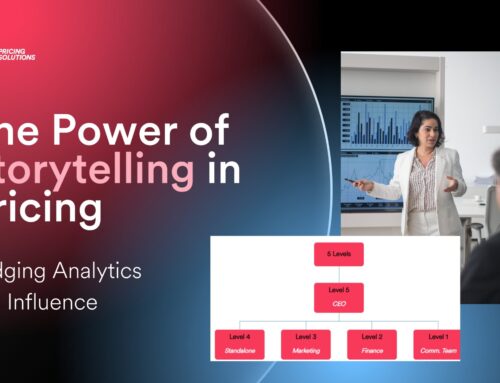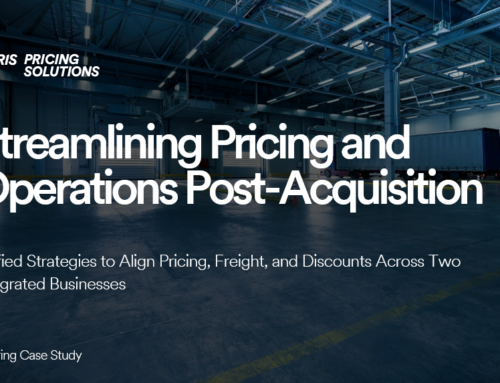Bringing new innovations to market poses significant challenges, especially when it comes to pricing. Without benchmarks, historical data, or clear price elasticity models, businesses often struggle to determine the right price for a groundbreaking product. Let’s explore the key aspects of pricing new innovations and strategies to overcome these hurdles.
What Makes New Products Difficult to Price?
When introducing a new product, especially if it’s the first of its kind, businesses often lack easy benchmarks. Statements like “nobody really does what this does, it’s pretty unique” are common. This uniqueness makes it difficult to establish a price, further complicated by the absence of historical sales data or price elasticity models.
This uncertainty in establishing a price can lead to doubts about the value being delivered, which in turn affects sales confidence. In B2B sales, such uncertainty can severely impact the overall performance of the sales function.
Case Study: MedTech Innovation and Pricing Challenges
Last year, we worked with one MedTech provider who developed a new device to support ventilated patients. Despite its impressive benefits—better patient outcomes, shorter hospital stays, and reduced treatment costs—the company faced a significant challenge. They were unsure about the willingness of key decision-makers, like CEOs and CFOs, to invest in this innovative solution. This uncertainty left them questioning not only the feasibility of launching the product but also its economic viability, especially considering the complexities of the regulatory environment.
Why Do Many Product-led Businesses Face Similar Issues?
Many businesses focus on product readiness without planning how to commercialize it. This often leads to failed or aborted product launches. Thus, it’s crucial to integrate pricing into the innovation process from the beginning.
You might be interested in this article Commercializing AI in Healthcare
Steps to Determine the Right Price
How Can Businesses Understand Financial Value?
Financial value is the foundation of value-based pricing, especially in B2B sectors like healthcare. It quantifies how a product or service generates financial benefits for a customer, by increasing revenues, decreasing expenses, or reducing capital requirements.
What Does the Financial Value Model Involve?
1.Customer Research:
- Identify and interview key decision-makers who control budgets.
- Understand key value drivers for purchasers
- Understand how costs are calculated
2. Developing the Financial Value Model:
- Quantify all ways the solution impacts economic levers (revenue growth, cost savings, additional costs).
- For example, if a solution reduces ICU length-of-stay by 40%, calculate the financial benefit based on the cost of ICU accommodation.
3. Validating the Model:
- Ensure claims are backed by evidence and align with expected benefits.
- Adjust the model based on feedback and expected ROI from purchasers.
How to Avoid Pricing Pitfalls in the First Place: Design to Price
What is the ‘Design to Price’ Approach?
Traditional product development often leaves pricing as an afterthought. The ‘Design to Price’ approach flips this by starting with the customer’s problem and the value they place on solving it. By incorporating deep market research, value discovery, and pricing early in the life cycle, companies have the potential to gain significant advantages by enhancing their success rate and return on investment for new innovations. Once we have a clear understanding of what problem the customer is trying to solve and the value they place on it, we can develop a solution that effectively addresses that need while remaining cost-effective.
How Can Businesses Implement Design to Price?
1.Early Customer Engagement:
- Engage with customers about financial value from the start.
- Continuously revisit findings throughout development.
2. Financial Value Modelling in Business Casing:
- Quantify how the solution drives customer value to build robust pricing assumptions.
- Regularly review and update these assumptions to adapt to changes in the competitive landscape, budgeting pathways, and regulatory requirements.
Our Solution
Pricing new innovations is complex but crucial for successful commercialization. At Iris Pricing Solutions, we understand financial value and integrate pricing strategies early into the innovation process. Our approach ensures groundbreaking products achieve market success by avoiding common pitfalls and equipping sales teams with strong value propositions to drive adoption and revenue growth.
In practice, this means engaging with customers about financial value from the start and revisiting these findings throughout development. We specialize in financial value modeling during the business casing stage to enhance pricing assumptions. Continuously reviewing and refining these assumptions is crucial, and our expertise makes us the best choice to help businesses adapt to changes in the competitive landscape, budgeting pathways, and regulatory requirements.
Contact us today to learn how our experience can help you price your new innovative products or services effectively.





